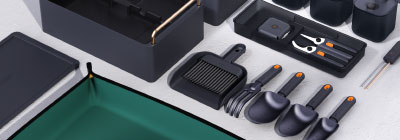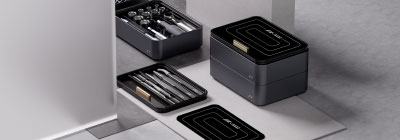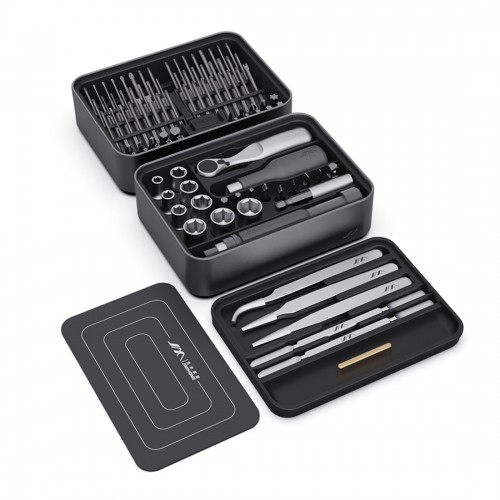
Keep Your Ride Smooth: A Comprehensive Guide to Bicycle Repair and Maintenance
Cycling is more than just a mode of transportation; it’s a lifestyle, a workout, and a way to explore the world around you. But like any machine, your bicycle requires regular maintenance to perform at its best. Whether you’re a casual commuter or a dedicated cyclist, knowing the basics of bicycle repair can save you time, money, and frustration. In this guide, we’ll walk through essential repair skills, common issues, and tips to keep your bike running smoothly.
1. Essential Tools for Bicycle Maintenance
Before diving into repairs, it’s important to have the right tools on hand. Here’s a basic toolkit every cyclist should have:
-
Hex wrenches (Allen keys): Essential for adjusting handlebars, seat posts, and brake components.
-
Tire levers and patch kit: For fixing flats quickly.
-
Chain tool: To remove or replace a broken chain.
-
Screwdrivers and adjustable wrench: For general adjustments.
-
Lubricants and cleaning supplies: To keep your chain, gears, and other moving parts in top shape.
Having these tools ready will make repairs quicker and less stressful.
2. Precision Repairs Made Easy with the JM-FM3 Multi-Functional Screwdriver Set
When it comes to fine-tuning your bicycle, especially for delicate components like brake calipers, gear derailleurs, or electronic accessories such as cycling computers, having the right tools makes all the difference. The JM-FM3 Multi-Functional Screwdriver Set is designed for precision and versatility. This 100-in-1 tool kit includes a ratchet wrench, multiple screwdriver holders, flexible handles, extension rods, a wide selection of bits (including 6.35mm, 4mm, and socket bits), and even magnetic tweezers and pry bars—covering almost any small repair task.
Its durable ABS injection-molded shell with a metallic finish not only looks premium but also provides a smooth, comfortable grip. The spring-loaded bit ejector makes switching tools quick and hassle-free, while the organized layout keeps your workspace tidy. Whether you’re tightening tiny screws on your derailleur, adjusting the brake lever, or working on small electronic parts of your bike, the JM-FM3 set ensures precision, speed, and reliability.
For cyclists who want a compact, all-in-one solution for detailed maintenance, this set is an essential addition to their toolkit.
3. Fixing a Flat Tire
One of the most common issues riders face is a flat tire. Here’s a simple way to handle it:
-
Remove the wheel: Release the brakes and remove the wheel from the frame.
-
Take out the tube: Use tire levers to carefully remove the inner tube.
-
Inspect and patch: Check for punctures and apply a patch if needed, or replace the tube.
-
Reassemble: Place the tube back inside the tire, mount the wheel, and inflate it to the recommended pressure.
Regularly inspecting tires for wear and embedded debris can prevent flats before they happen.
4. Chain Maintenance and Repair
A well-lubricated chain improves performance and extends the life of your bike. Here’s how to maintain it:
-
Cleaning: Remove dirt and grime with a chain cleaning tool or a rag with degreaser.
-
Lubrication: Apply bicycle-specific chain lubricant evenly while rotating the pedals.
-
Chain replacement: If your chain is stretched or damaged, use a chain tool to remove it and install a new one.
Remember, a neglected chain can cause poor shifting, noisy rides, and even damage your gears.
5. Brake Adjustment
Proper brakes are crucial for safety. There are two common types: rim brakes and disc brakes.
-
Rim brakes: Ensure the brake pads hit the rim evenly. Adjust pad position using the mounting bolts and test brake tension.
-
Disc brakes: Check rotor alignment and caliper position. Minor adjustments with an Allen key can prevent rubbing.
Always test your brakes before heading out on a ride.
6. Gear Shifting and Derailleur Adjustment
Smooth gear shifting is essential for an efficient ride. If your gears skip or hesitate:
-
Inspect the derailleur for alignment issues.
-
Adjust the cable tension using the barrel adjuster.
-
Ensure the chain runs smoothly across all gears.
Proper gear adjustment not only improves performance but also prevents excessive wear on the drivetrain.
7. Regular Cleaning and Inspection
Maintenance is not just about repairs. Regular cleaning and inspection can prevent problems:
-
Wipe down the frame and components to remove dirt and moisture.
-
Check for loose bolts, cracks, or worn parts.
-
Inspect tires, brakes, and chains before long rides.
A clean, well-maintained bike performs better and lasts longer.
8. When to Seek Professional Help
While DIY maintenance covers most everyday issues, some repairs are best handled by professionals:
-
Wheel truing for bent rims
-
Bottom bracket or headset overhauls
-
Hydraulic brake servicing
-
Complex suspension repairs
Visiting a bike shop ensures these critical components are serviced correctly.
Conclusion: Keep Your Bicycle Performing at Its Best
A bicycle is only as reliable as its maintenance. By keeping your tires inflated, chain lubricated, brakes adjusted, and gears tuned, you’ll enjoy smoother rides and reduce the risk of breakdowns. With a little practice and the right tools—like the JM-FM3 Multi-Functional Screwdriver Set for precision tasks—most basic repairs are well within a rider’s reach. Remember, regular care is easier than emergency fixes—your bike, your safety, and your enjoyment depend on it.







Leave a Comment